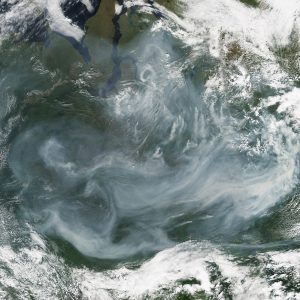The Stream, October 12: UN Issues Emergency Appeal For Haiti
The Global Rundown
The United Nations is asking for millions of dollars to address the urgent and disastrous conditions in Haiti following Hurricane Matthew. Floods similar in scale to those brought by Superstorm Sandy are set to occur much more frequently in the northeastern United States by the end of the century. International mining companies investing in Colombia are more concerned about uncertain legal and environmental frameworks than a peace deal between the government and rebel fighters. A new law in California aims to illustrate a clearer picture of water utilities’ greenhouse gas emissions. Protesters continue to oppose a plan to store natural gas products below the largest lake in New York’s Finger Lakes region.
“It’s useless to have a post-conflict window of opportunity if our neighbors have half the tax rate we do and if 30-year contracts are signed and then the conditions change.” –Santiago Angel, the head of Colombia’s mining association, explaining that foreign companies are less concerned about a peace agreement between the Colombian government and rebel fighters than they are about uncertain taxes, environmental regulations, and land tenure laws. A number of mining projects have been stalled or halted due to community concerns over wetlands and water quality. (Reuters)
By The Numbers
$120 million Amount of an emergency appeal the United Nations issued Tuesday for relief efforts in Haiti, where some communities were “almost wiped off the map” by Hurricane Matthew. Access to clean water and sanitation is especially critical as the country contends with an ongoing cholera crisis. NBC News
20 percent Amount of California’s electricity that is used to pump, treat, transport, and dispose of water and wastewater. A new state law will allow water utilities to voluntarily disclose the greenhouse gas emissions from their energy use. Guardian
Science, Studies, And Reports
Floods like those that inundated New York and New Jersey in the wake of Superstorm Sandy are three times more common now than they were in the year 1800, according to a study by researchers at Princeton University. As storms become more frequent, sea levels rise, and temperatures increase, these types of floods could occur once every 23 years by 2100, instead of once every 400 years. Guardian
On The Radar
The New York state government continues to review plans by an energy company to store natural gas and propane in underground caverns below Seneca Lake, the largest lake in the Finger Lakes region. The plans have been strongly opposed by anti-fracking groups and some residents and business owners, who worry about potential effects on air and water quality. PRI
A news correspondent for Circle of Blue based out of Hawaii. She writes The Stream, Circle of Blue’s daily digest of international water news trends. Her interests include food security, ecology and the Great Lakes.
Contact Codi Kozacek





